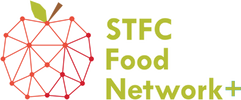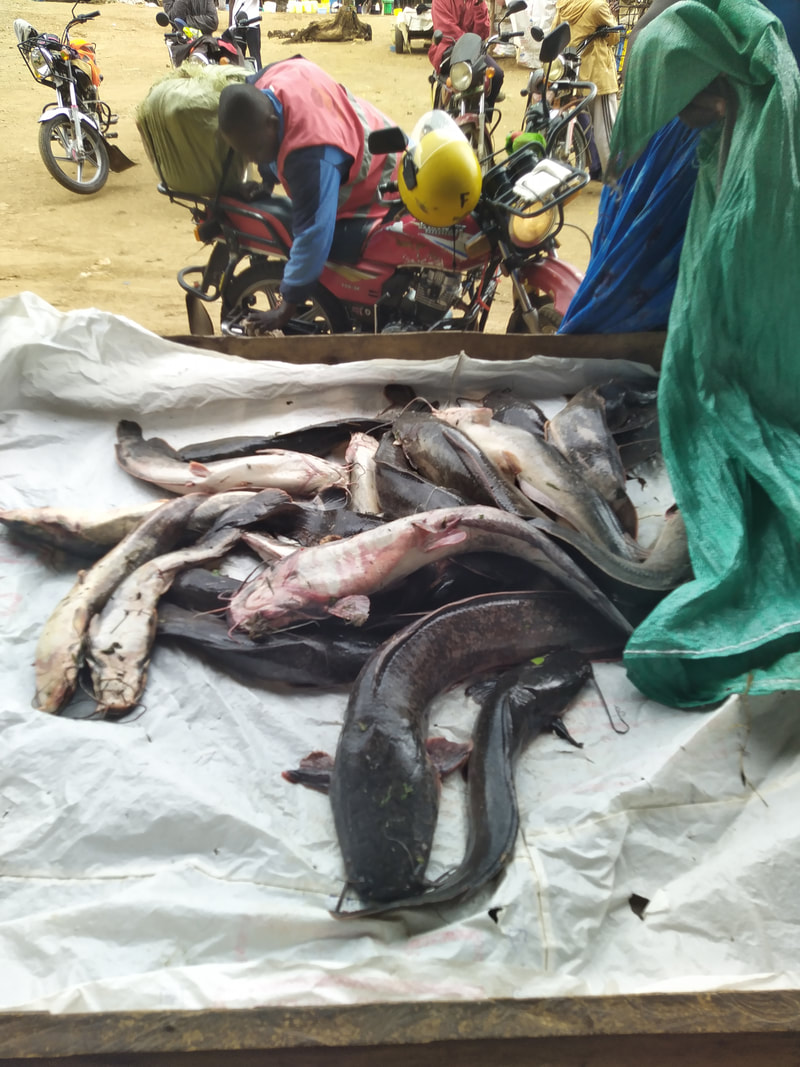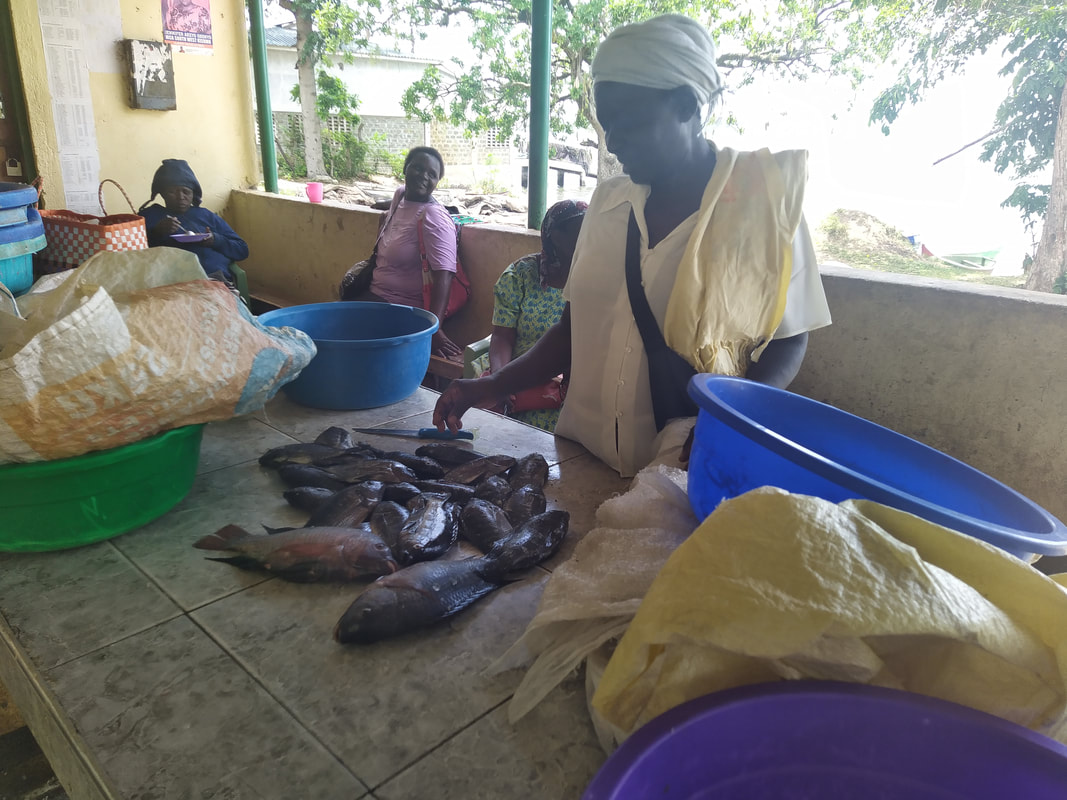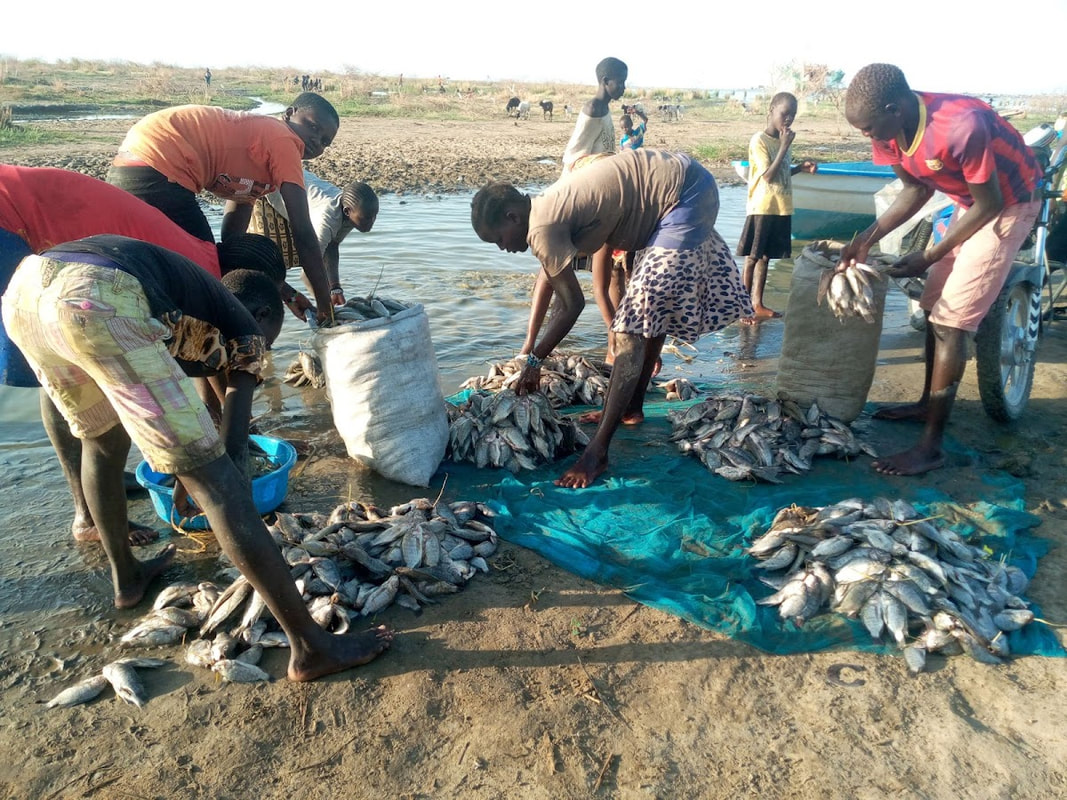Fish for all - How digital marketplaces could radically improve Farmed fish distribution in Kenya12/7/2023 A project supported by a STFC Food Network (SFN) Scoping Project Grant has demonstrated how digital technologies could help create a thriving farmed fish economy in Kenya – supporting livelihoods and increasing access to healthy protein. It is said that if you give a man a fish you can feed him for a day, but if you teach him how to fish, he can earn a living for himself. But what if he can’t get his fish to the market? This is the situation facing many fish farmers in Kenya, which has one of the fastest-growing fresh water aquaculture sectors in Africa. But despite this, production remains low and post-harvest losses currently reduce yields by around 40% (FAO, 2011; Kimiywe, 2015) . A key problem is the general lack of cold-storage facilities to keep harvested fish fresh, and farmers struggling to find buyers in time when the harvest is ready. According to Dr Mary A. Opiyo, a Research Scientist from the Kenya Marine and Fisheries Research Institute (KMFRI), “overcoming these challenges would have immense economic, environmental, and social impacts in Kenya. With supplies from wild fish becoming ever-more precarious, farmed fish is likely to play an increasingly important role in maintaining a healthy protein supply across African countries.” At the same time, consumer interest in eating fish has been growing, supported by Government initiatives such as the Eat More Fish campaigns. But before fish can become a larger part of Kenyan diets, the supply needs to be matched with the demand. “This gave me the idea for a data-driven communication platform to link fish supply chain members in Kenya, so that farmers always have a ready market for their produce” says Mary. As part of a multidisciplinary team of both Kenyan and UK researchers, Mary applied for and was awarded a SFN Scoping Project Grant to investigate how feasible this would be. Identifying the critical challenges Together, the team’s expertise included both first-hand knowledge of fish breeding, aquaculture systems, and food supply chains in Kenya, besides large-scale data science, digital supply chains, and technologies to reduce food waste. This enabled them to take a holistic, whole-system approach to map out the current situation and identify the most effective points for intervention. The first stage was to assess the specific challenges affecting key stakeholders by carrying out interviews and online surveys with over a hundred fish farmers and traders. For the farmers, key challenges included: Lack of cold-chain facilities to keep fish fresh after harvest; Low availability of fish feed, making it difficult to produce large harvests; Inconsistent harvests, making it challenging to find repeat buyers; Competition from cheaper farmed fish (tilapia) imported from Uganda or China. Difficulty in finding customers when they had fish to sell was one of the most dominant concerns. For 39% of the respondents, this was one of the major reasons that caused harvested fish to be wasted. For fish traders, meanwhile, the critical issues were: High production costs for Kenyan farmed fish resulting in a more expensive product (compared to cheaper imports); Buyers not being aware about where fish is available for sale; A lack of information about the safety and traceability of farmed fish; Farmers not understanding the market’s needs – for instance, farmers often producing fish larger than the consumers’ preferred size. Both farmers and traders agreed that there was a chronic mismatch between supply and demand in the Kenyan fish farming sector, with around 45% believing that demand was less than the supply, and 50% feeling that demand outstripped supply. “This shows that, at the same time, farmers are losing fish because they can’t find a buyer, yet there are buyers and traders who can’t access fish to sell to their customers” says Mary. “If these two groups could be connected, this would open up a market for the sector to expand.” Harnessing the power of digital technologies Besides these issues, the stakeholder surveys also revealed an untapped potential solution: digital technologies. Most of the surveyed fish farmers relied on making phone calls to individual customers to sell their fish, with digital methods (such as a Facebook page or shared mobile application) used by less than 10%. As well as being highly time-intensive, this method naturally restricted farmers to approaching customers they were already in contact with. In contrast, a ‘digital marketplace’ would enable farmers to interact seamlessly with both existing customers and new potential buyers. Although a number of such apps are already used in Kenyan food supply chains, take-up remains extremely low, and almost none have been specifically designed for the fish sector. “Another key problem with these existing digital platforms is that they do not operate in real-time, so they can’t show the latest prices in the market” adds Mary. In order to understand what might encourage greater use of digital apps, the stakeholder group were asked what features of these would be most important for them. Farmers and traders agreed unanimously that a digital marketplace app should show up-to-date pricing information, with most also agreeing that the location and availability of the fish were also crucial. Other important elements included the delivery time required to reach the customer, and the distribution network, i.e. whether the fish was coming directly from the farmer or an intermediate trader. “We also found that both farmers and traders were keen to have the option of posting a photograph of the fish for sale” says Mary. “In addition, traders who did not have a smartphone themselves preferred a digital marketplace that had a USSD code, so that they could be sent information on current prices and stock availability by text message.” The next steps Having demonstrated both stakeholder interest and a strong potential impact for a digital marketplace, the next stage of the project will involve developing a prototype platform to be piloted in Western Kenya with fish aggregators, fish traders, fish farmers, and selected consumers. “Within a few years we would like to see a functioning digital marketplace opening up access to healthy fish in Kenya, with traders and consumers able to buy and sell fish with just a touch of a button” says Mary. “In addition, the platform could also enable more women to sell fish as a livelihood. This would help address the current gender divisions of labour that create power imbalances between men and women in the fishing communities in Western Kenya (Kwena et al., 2017).” The full project team was: Dr Jens Jensen (STFC), Dr Mary A. Opiyo (Kenya Marine and Fisheries Research Institute), Ms Morine Mukami (Kenya Marine and Fisheries Research Institute), Dr Paul Sagwe Orina (Kenya Marine and Fisheries Research Institute), Professor Wantao Yu (University of Roehampton), Dr Baris Yuce (University of Exeter), and Dr Oznur Yurt (The Open University). References FAO. (2011). Post-harvest fish loss assessment in small-scale fisheries A guide for the extension officer. In FAO Fisheries and Aquaculture Technical Paper 559 (Vol. 559). Kimiywe, J. (2015). Food and nutrition security: Challenges of post-harvest handling in Kenya. Proceedings of the Nutrition Society, 74(4), 487–495. https://doi.org/10.1017/S0029665115002414 Kwena, Z. A., Shisanya, C. A., Bukusi, E. A., Turan, J. M., Dworkin, S. L., Rota, G. A., & Mwanzo, I. J. (2017). Jaboya (“Sex for Fish”): A Qualitative Analysis of Contextual Risk Factors for Extramarital Partnerships in the Fishing Communities in Western Kenya. Archives of Sexual Behavior, 46(7), 1877–1890. https://doi.org/10.1007/s10508-016-0930-0
2 Comments
Mike
18/7/2023 04:35:32 am
Very informative, such initiatives are very much welcomed and should be embraced by all stake holders in the aquaculture industry in Kenya.
Reply
Your comment will be posted after it is approved.
Leave a Reply. |
AuthorJune 2024 - Archives
June 2024
Categories |
- Home
- Webinars and Events
- About the SFN+
- News
- Blog
- Expert Working Groups
- Funding
-
Publications
- Bioeconomy positioning paper
- SFN+ 5th Annual Conference
- OMM Policy Report
- ‘Multi-Stakeholder International One Day Workshop on Organic Agri-Food Value Chains for Net Zero’ Report
- SFN 2050 UK Net Zero Food report
- Sustainable Cold Food Chain Booklet
- Food Sensing Technologies for Safe and Nutritious Food
- Sustainable urban and vertical farming
- Projects
- Join/Contact Us




 RSS Feed
RSS Feed


